Sichuan food, one of the most popular cuisines of the eight cuisines of China, enjoys very high popularity across the world now. It is famous for its mala – a hot and numbing flavor. But those food are far from that. So I want to write a comprehensive guide to Sichuan food, covering its history, specialty dishes, and recipes. I hope to guide you to try this lovely cuisine.
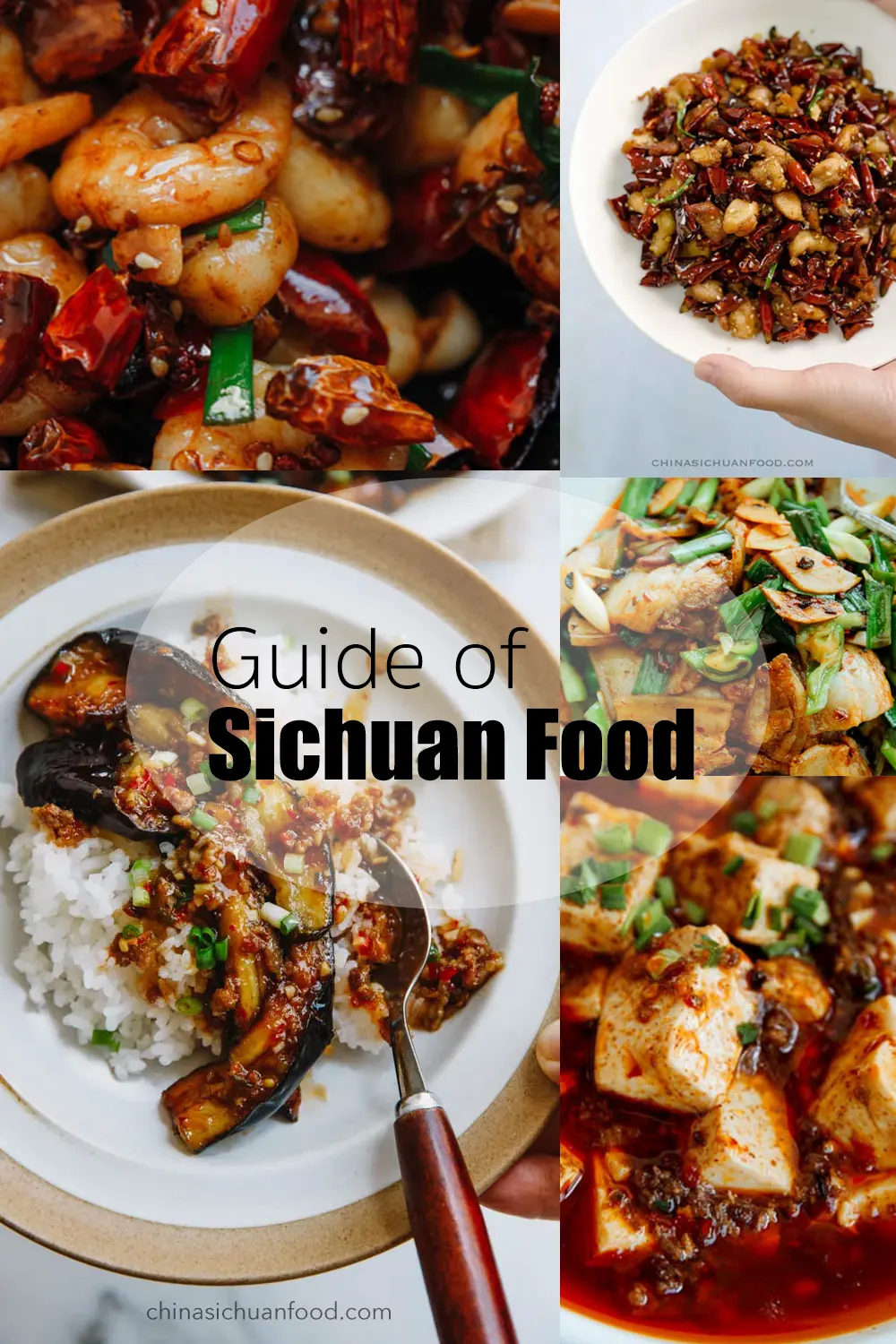
Sichuanese Cuisine- A Comprehensive Guide
Sichuan cuisine originated in the Sichuan province of China. The province is located in southwest China and is renowned for its spicy food. Sichuan food is divided into three subtypes: Rong School (Shanghe Gang), Yu School (Xiahe Gang), and Salt Gang (Xiaohe Gang). Those tree subtypes share similarities but focus on different elements.
Sichuan cuisine is famous for its wide range of materials. Real Sichuan food covers a very large scoop of dishes and ingredients. Although it is famous worldwide for its mala flavor, there is much more to Sichuan food than just mala. Sichuan food is famous for its fresh ingredients, variety of cooking techniques, and tons of other flavors.
The history of Sichuan food
The history of Ancient Sichuan food begins before the pre-Qin dynasty when only Sichuan peppercorn and common aromatics are used to make the dishes spicy and fragrant. Morden Sichuan cuisine can be traced back to the late Ming dynasty and Qing dynasty when chili peppers were imported. Chefs began to experiment with the use of local ingredients and spices to create new flavors. In the past 70 years, the cuisine of Sichuan began to change, and more and more dishes began to feature chili peppers and other spices. Sometimes we even believe that it is too hot and spicy and lose some aspect of the tradition.
Different types of Sichuan Food
Sichuan cuisine originated in the Sichuan province of China. Sichuan food is divided into three subtypes: Rong School (Shanghe Gang), Yu School (Xiahe Gang), and Salt Gang (Xiaohe Gang). Those tree subtypes share similarities but focus on different elements.
Unique Seasoning and condiments
Sichuan cuisine is renowned for several soul condiments and seasonings. In addition to the regular soy sauce, sugar, salt, and sesame oil. Sichuan food also involves its unique seasonings. Let’s take a further look at them.
Doubanjiang
Doubanjiang (豆瓣酱)is a type of fermented broad bean paste that is commonly used in Sichuan cuisine. It has a strong, salty flavor and is used as a seasoning or condiment in many dishes. It is named “the soul of Sichuan Food”. Half of the top Sichuan dishes use doubanjiang to build the foundation flavor. In addition, doubanjiang can give the dish a lovely bright red color.
Douchi
Dou-chi(豆豉) is a type of fermented black soybean that is used as a seasoning in Sichuan cuisine. It has a strong, earthy flavor and is used sparingly in dishes because of its high salt content.
Chili peppers
Chili peppers (干辣椒)are used extensively in Sichuan cuisine, both fresh and dried. They add a characteristic fiery heat to dishes, as well as a depth of flavor.
Sichuan peppercorn (Hua Jiao)
Sichuan pepper or Sichuan peppercorn (花椒)is another key ingredient in many Sichuan dishes. It has a unique flavor that is slightly citrusy and floral, with a hint of heat and a strong numbing feeling on your tongue.
Sichuan chili oil
If you love Sichuan food, there is no reason to miss the chili oil. It is a chili sauce made with vegetable oil (locally we use rapeseed oil), aromatics (ginger and onion), Sichuan fried chili flakes, and spices. Sichuan chili oil is an ideal ingredient for salad or noodles. Many restaurants use it as a table condiment that can be added to everything.
Aromatics
Aromatic (ginger, garlic, and green onion) are also used to add depth of flavor to Sichuan dishes, usually with larger amounts used in Sichuan cuisine compared with other cuisines. These ingredients are often used in conjunction with chili peppers and Sichuan pepper to create complex and flavourful dishes.
Sichuan flavors – Beyond mala
1.Mala flavor (麻辣味) is only one aspect of Sichuan cuisine. But this flavor is the most successful one. Personally, I love this flavor very much. Sichuan peppercorn plays an important role in this flavor. It creates a numbing feeling and makes our taste system much more sensitive. That’s why you usually feel additive for mala flavor.
2. Yu Xiang flavor (鱼香味) is another popular flavor outside China. Yu Xiang sauce is often referred to as hot garlic sauce, is one of the representatives of Sichuan cuisine is Sichuan eggplant, or Yu Xiang Qie Zi(鱼香茄子in Chinese). “鱼香” actually means Fish-Fragrant, is a kind of flavor that is quite famous in Sichuan dishes. Some menus may refer to this dish as Eggplants in Chinese hot garlic sauce. It is made with a variety of ingredients including chili peppers, garlic, ginger, scallion, and soy sauce. The sauce is often used as stir-fry combined sauce or as a dipping sauce.
3. Hot and sour flavor (酸辣味)is one of the most common flavors in Chinese cuisine. But Sichuan cuisine has its own version of hot and sour flavor too. The hot and sour flavor in Sichuan differs from other areas. It is not only hot and sour but, in most cases, has a strong taste of Sichuan peppercorn. A classic dish that represents this flavor is hot and sour shredded potatoes in which Sichuan peppercorn is also imported to create a flavor with more layers.
4. Strange flavor (guai wei,怪味) is a flavor that is hard to find in other Chinese cuisines. I believe that most of you don’t know this flavor. It is made with common ingredients, soy sauce, sugar, aromatics and chili peppers, sometimes Sichuan peppercorns. But the ratio is different from the flavors above and thus creating a flavor that is hard to describe. So it is named strong flavor. Savory crispy eggplant is carrying this flavor.
5. Scorched chili flavor (Hula flavor,糊辣味). This is a flavor named after its technique. Chili peppers or other dried spices are fried in a wok until darken. So the oil absorbs the flavors of the peppers deeply, then ingredients are further added to mix with the oil. Other sauces and condiments can also be added to enhance the flavor. I believe the best example dish is bok choy stir-fried with garlic and chili pepper. But the flavor of chili pepper is only a fundamental tone. This sauce will be enhanced by the flavors of Sichuan peppercorn, black vinegar, and sugar. Kung Pao flavor is a sub-type of the flavor.
6. Homestyle flavor (家常味) is the blond flavor using very basic ingredients. This flavor is less combined than other flavors. Most homestyle dishes are savory. This flavor only calls for common and easy-to-find ingredients.
7.Garlic sauce flavor(蒜香味) is mostly used in cold dishes and salads. A large amount of garlic is used to solidify the base. This sauce usually contains a very faint flavor of sweet and chili oil.
8. Sesame paste flavor (芝麻酱味) uses sesame paste as the main base, and soy sauce, sesame oil, salt, and sugar are imported. Sesame paste has a very strong flavor, so other seasonings are limited to a small amount. This flavor is super great for vegetables and noodles.
9. Sichuan peppercorn and green onion flavor (椒麻味) is very unique to Sichuan Food and it is almost unknown outside China. This flavor is simply made with Sichuan peppercorn, green onion, and sesame oil. Those three seasonings create lovely flavors that can beat long-list flavors.
Dry frying – the Unique Sichuan cooking technique
Cooking methods used in Sichuan cuisine include common stir-frying, boiling, braising, and steaming. It also develops some unique methods: dry frying, dry pot, and smoking. I love to introduce my favorite series – dry frying and dry pot.
Dry frying(干扁): it is a cooking method that can be used for both meats and vegetables. The ingredients are either pan-fried or deep-fried heat until they are dry and slightly crispy. Then aromatics are added to enhance the flavor. Since the water content is almost removed, flavors can go inside the ingredient, creating extremely profound and pungent flavors. Based on this method, a dry pot is developed in which you can almost combine all of the daily ingredients.
Top famous Sichuan Food dishes
1. Mala hot pot (麻辣火锅)Originating from Sichuan cuisine, Mala Hot Pot is not only a popular dish in China but also gaining popularity in other parts of the world. Mala Hot Pot is typically made with a broth that is seasoned with lots of spices such as doubanjiang, chili pepper, star anise, bay leaves, Sichuan peppercorn, and many other spices. The combined seasoning for hot pot is fried for a long time so the flavors and taste can combine with the oil. The stock or water is added to make a broth. You can cook almost all of the daily food in the pot such as meats, veggies, seafood, and noodles. The dish is best enjoyed with family or friends so that everyone can have a taste of everything! Hot pot in Chongqing usually uses animal fat like beef tallow. However Hot pot dishes in Chengdu prefer to use vegetable oil. The former has a heavier taste while the Chengdu version is lighter and fresher. Apart from the original version, we also have a dry pot hot pot, known Mala Xiangguo.
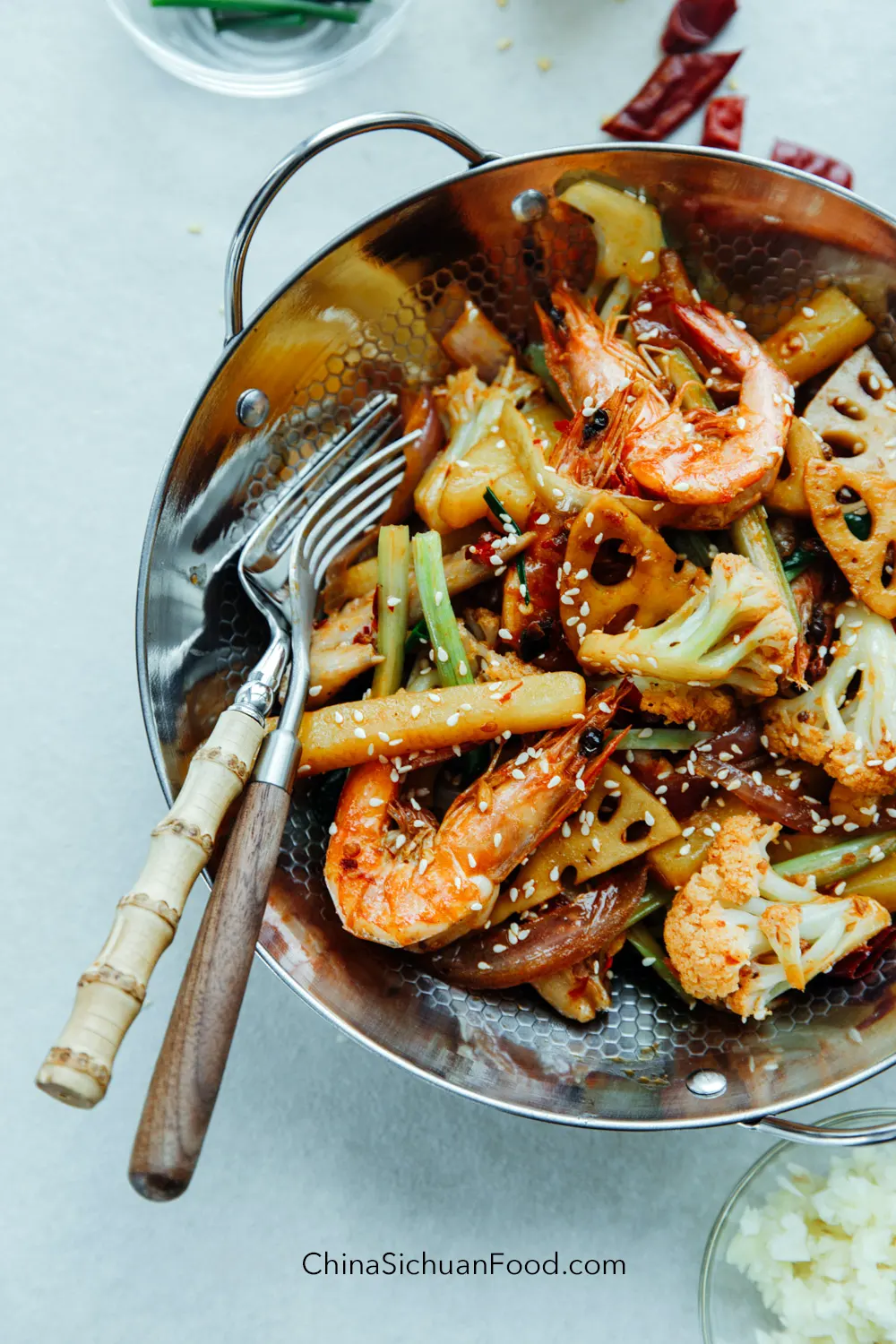
2. Mapo tofu (麻婆豆腐)is a tofu stew using very basic Sichuan ingredients. Doubanjiang, dou-chi, and Sichuan peppercorn all find their roles in this one. It is a typical mala flavor. You can also make a vegetarian version by replacing pork with shiitake mushrooms.
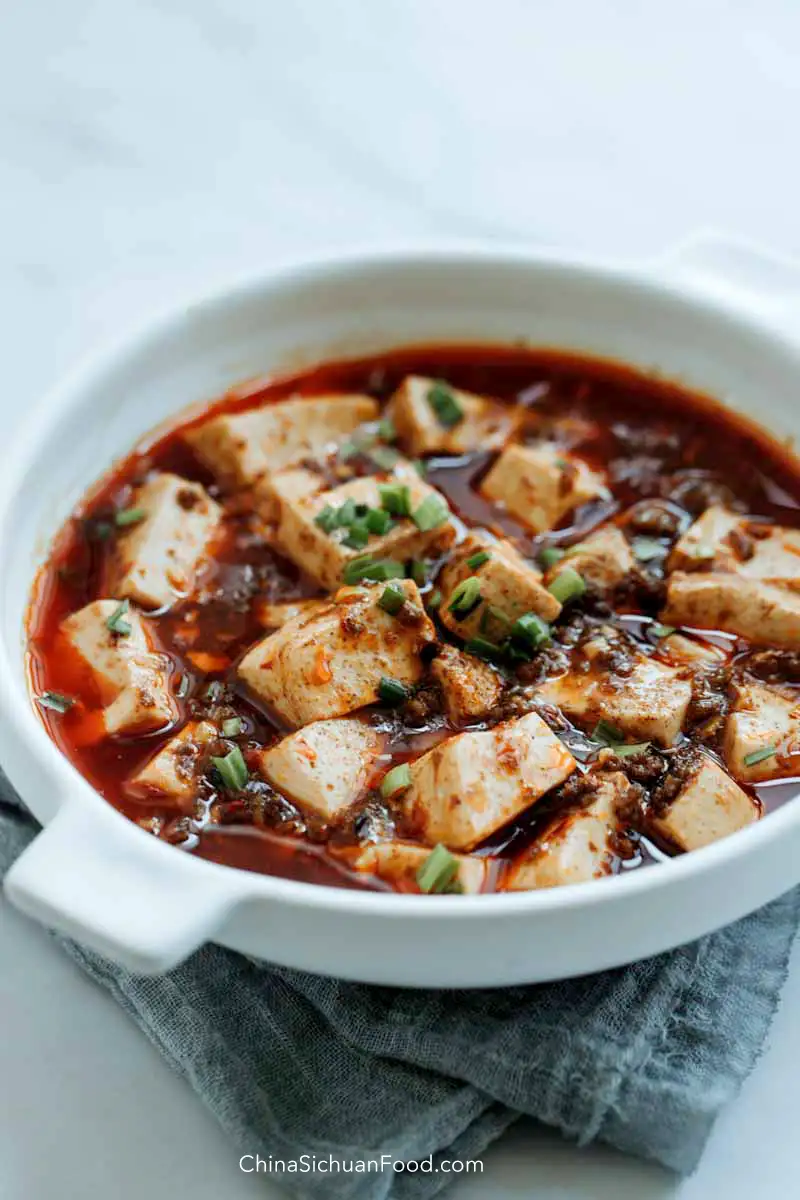
3. Kung Pao Chicken (宫保鸡丁) is a stir-fried dish made with chicken, peanuts, vegetables, and chili peppers. The dish is named after Ding Baozhen, a governor of Sichuan Province during the Qing dynasty. Kung Pao sauce is further developed as a flavor and used in other dishes. See also Kung Pao mushrooms, kung pao tofu, and Kung Pao lotus root
4. Dan Dan Noodles (担担面)are a street food staple in Sichuan province. It is a bowl of wheat noodles in a savory, spicy sauce topped with minced pork. It combines almost all of the famous Sichuan seasonings just like Ma Po tofu. Dan dan noodles can also be vegan friendly.
You can also check other popular Sichuan-style noodles: sweetened soy sauce noodles, Chongqing noodles, and Sichuan cold noodles.
5. Twice Cooked Pork (回锅肉)is a dish made of pork that is first boiled or steamed until cooked through, then cut into pieces and stir-fried with essential Sichuan seasonings. It has very high popularity in the Sichuan area.
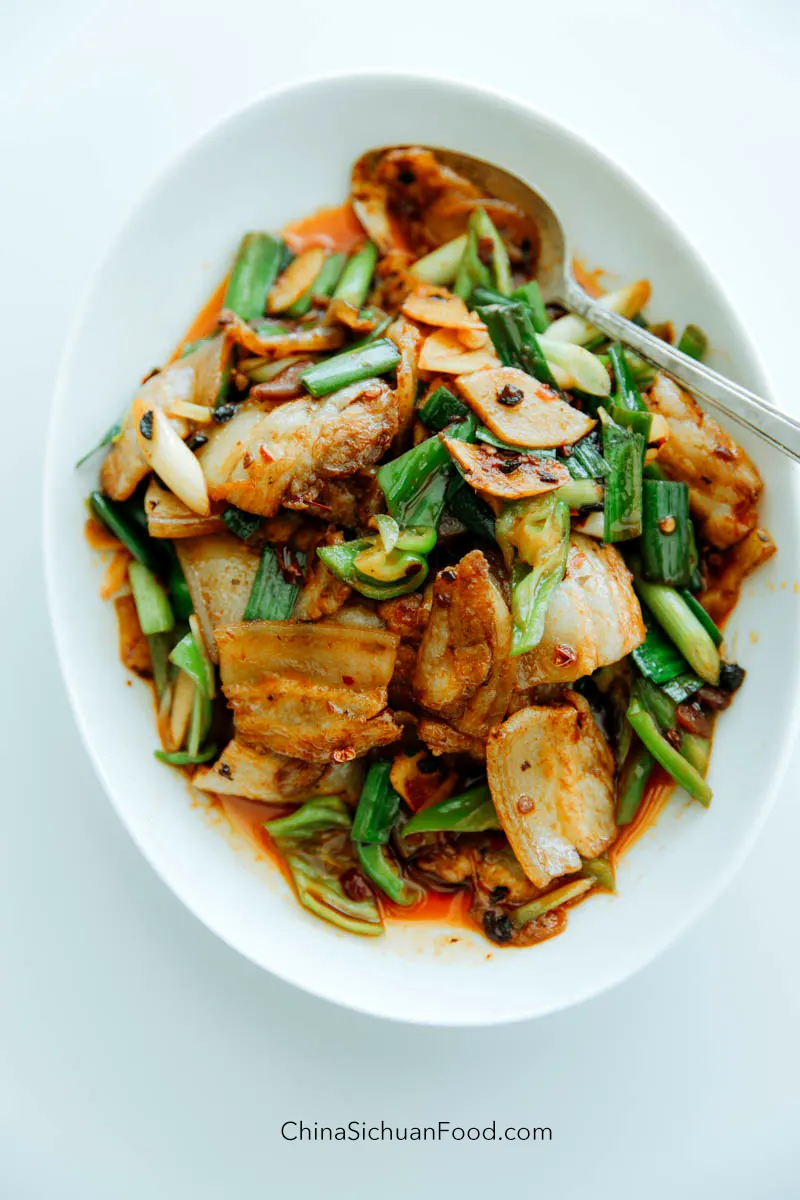
6. Yu Xiang eggplant (鱼香茄子)is a hot and sweet eggplant stir fry with minced pork and aromatics. It is super great for steamed rice. Also, see Yu Xiang shredded pork.
7. Mala chicken (Laziji, 辣子鸡)- Have you ever heard of the interesting saying “let’s find the chicken among the peppers”? That’s the description of this mala chicken. Chicken cubes are toasted with a large number of chili peppers, aromatics, and Sichuan peppercorns. But the chicken itself is not overwhelming hot since we applied a special treatment on the chili peppers.
I hope you find useful information about my favorite food cuisine, Sichuan Food. If you have any feedback or questions, please comment.

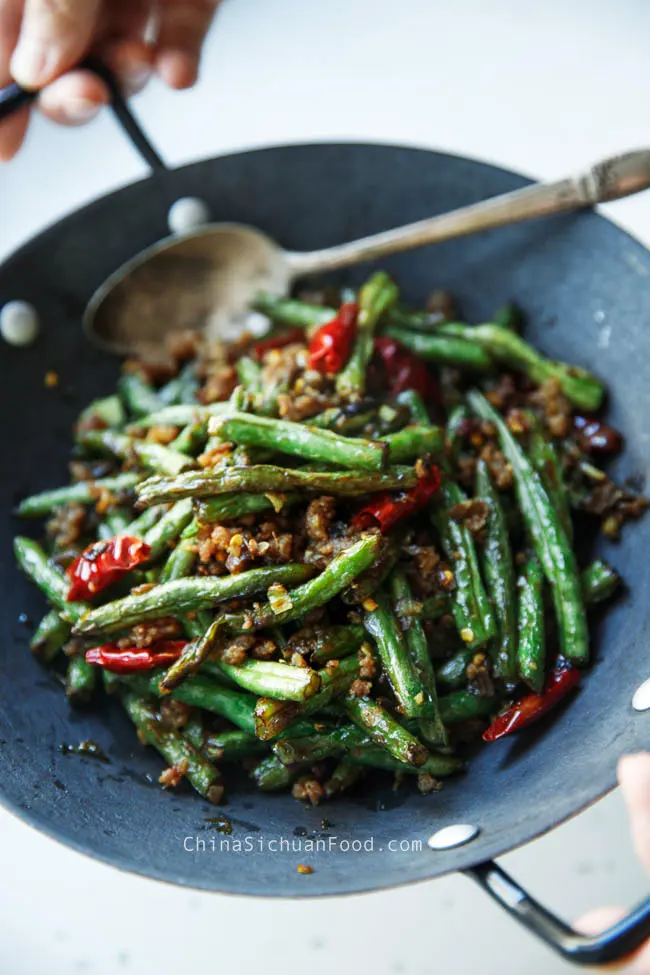
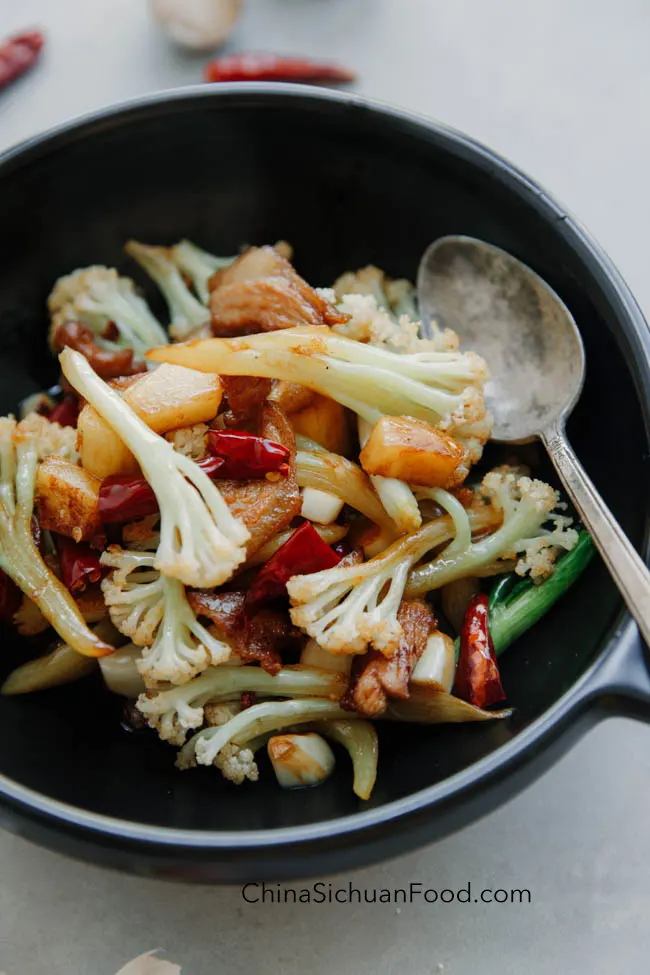
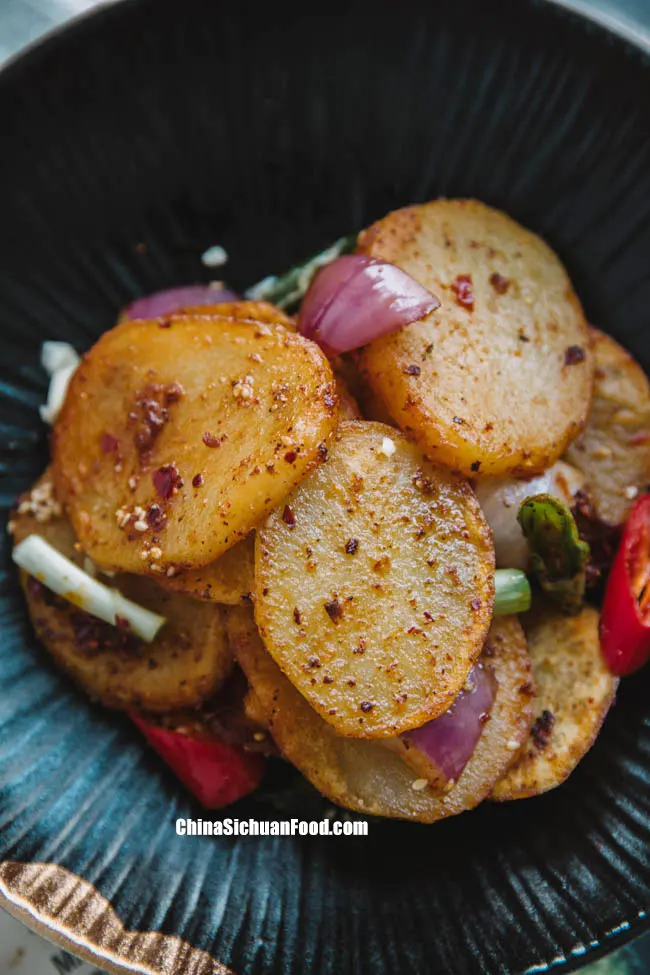
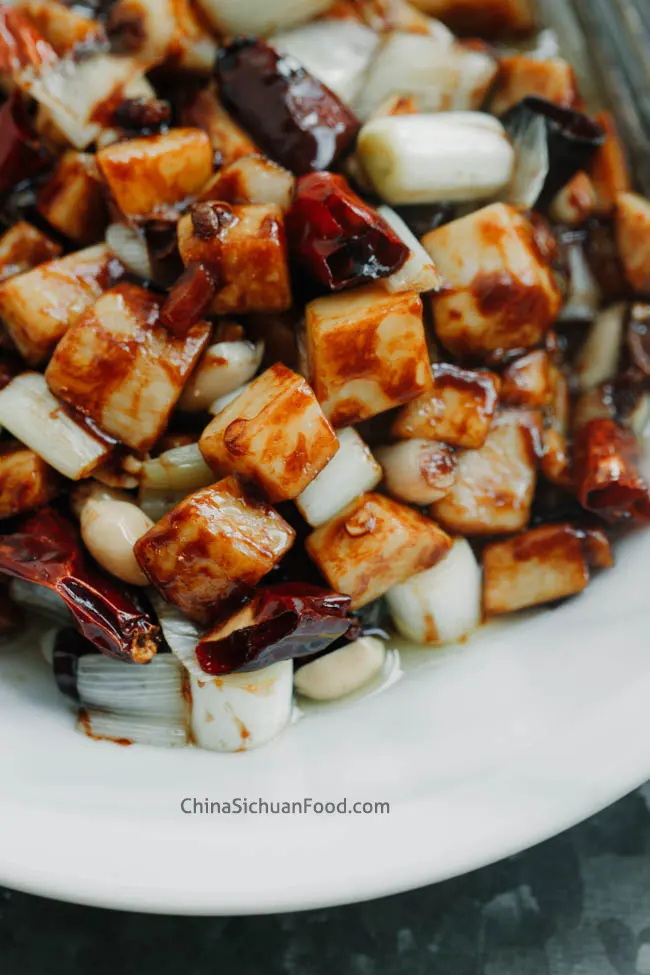
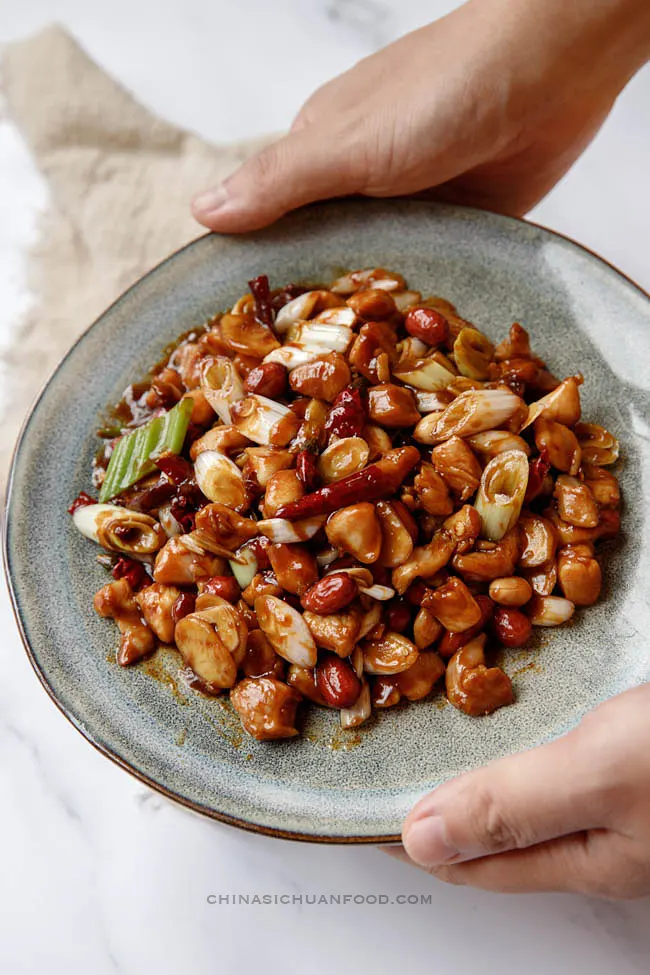
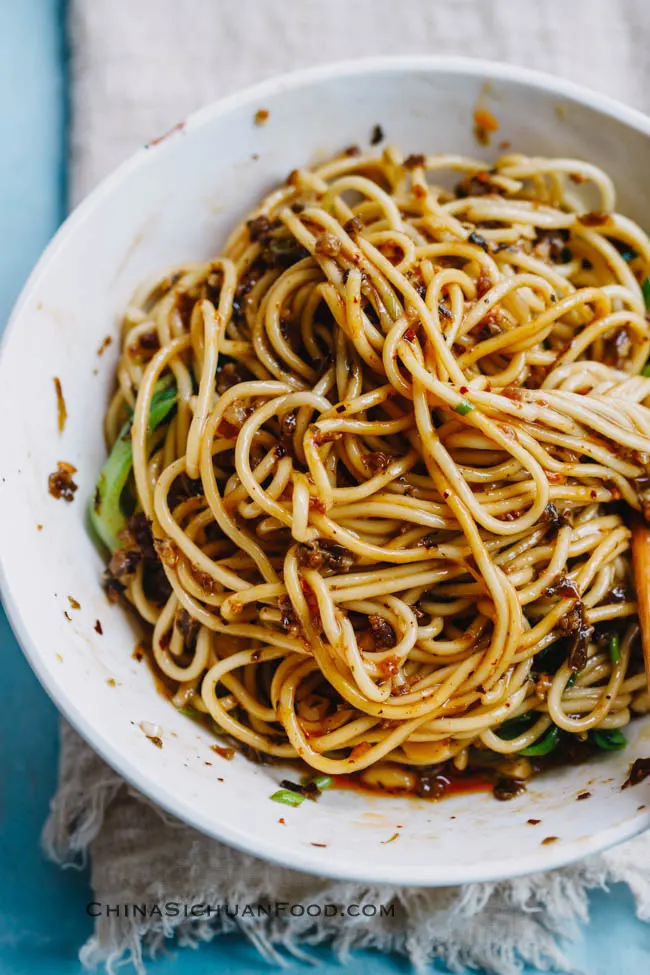
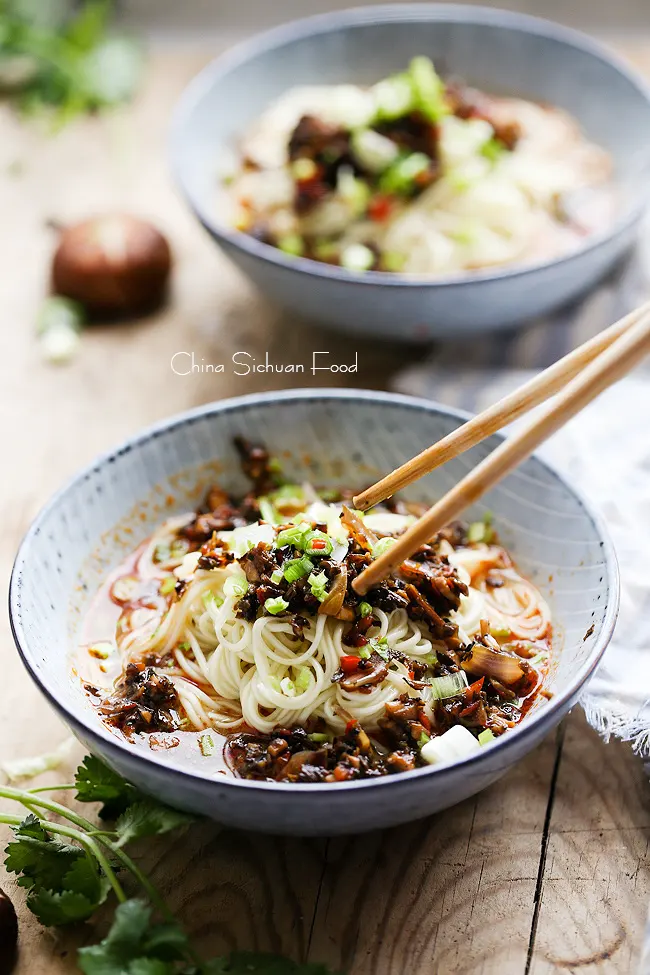
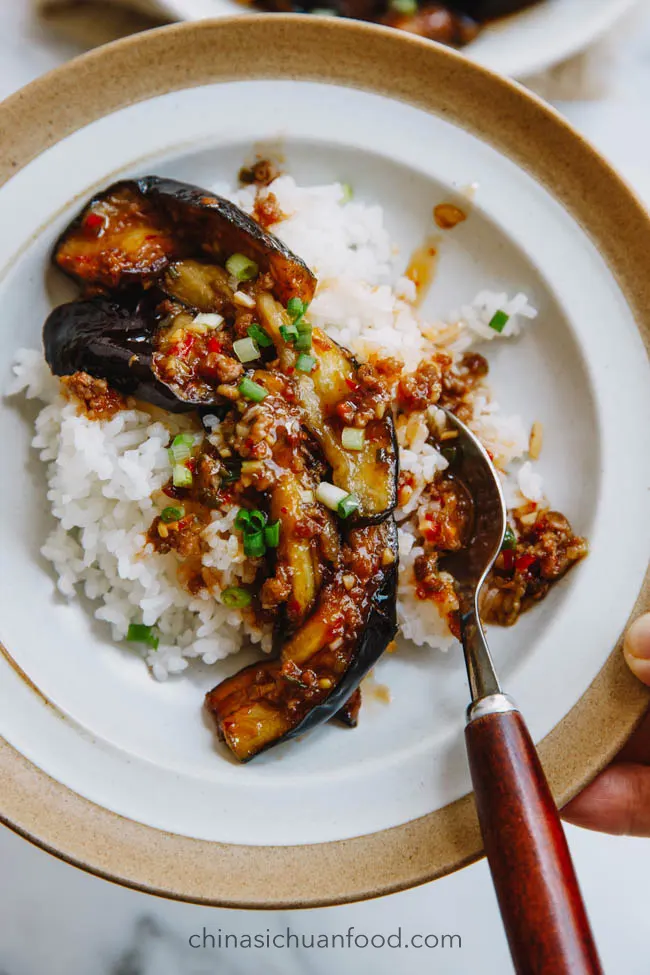
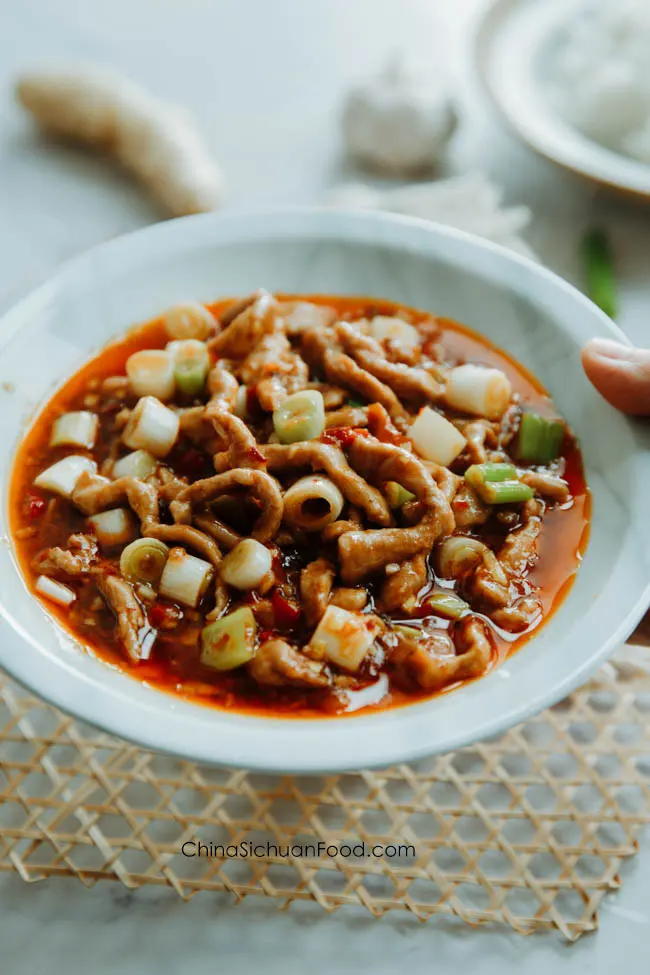
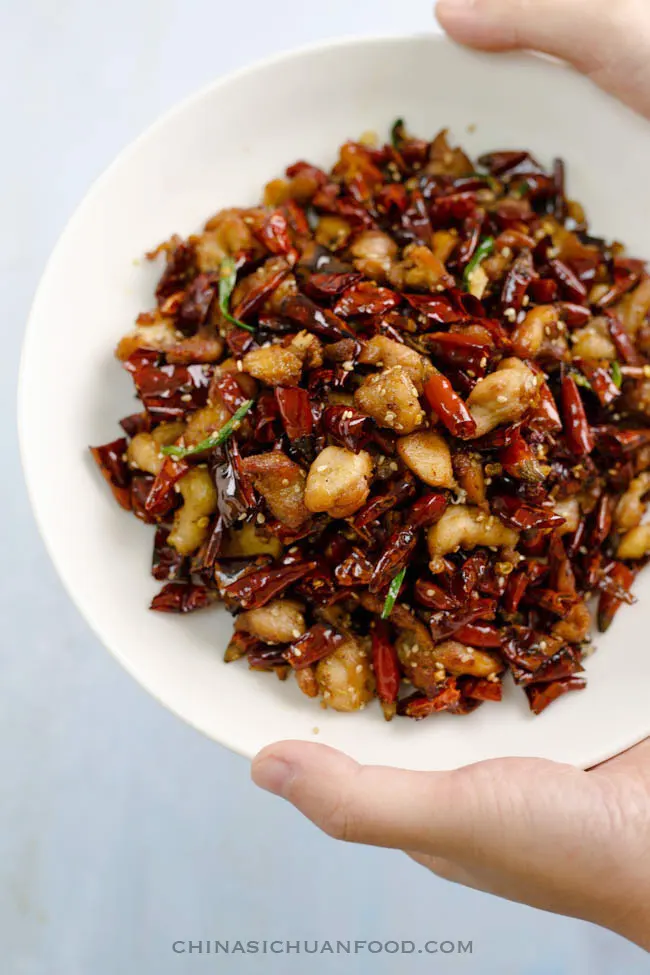
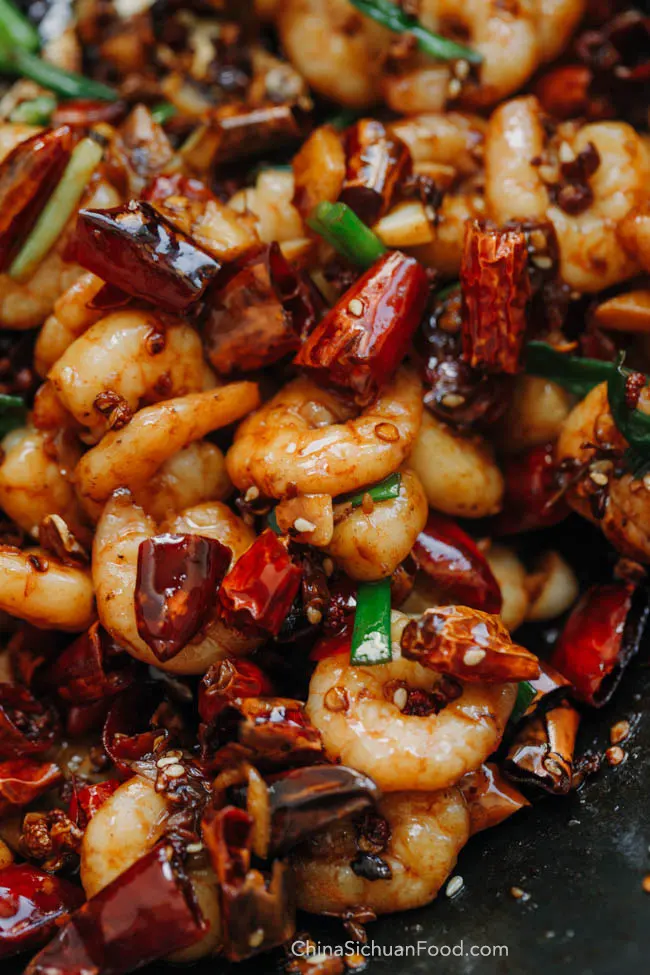
Not so much a comment more of a request. Is it possible to download /save these recipes and cooking methods pls?
Paul,
That’s a good suggestion. I will plan an e-cookbook for my loved Sichuan recipes.
I just want to say thank you for posting this. I’m inspired to ok earn and cook more Sichuan food now.
Thanks John!! Love you. Happy cooking!
This is more of a question, but do you use tofu a lot in Sichuan cooking?
Because I am vegetarian, but love chinese food, so I was just wondering.
Yes. Tofu is quite plain itself but it can be super delicious with the Sichuan sauces.
Of course! In Sichuan Guangyuan, a place located in northeast Sichuan province. There are hundreds of different menu made of Tofu! This is amazing! Right? Hope you to travel and taste it one day. And enjoy the journey to Jianmen pass, which is well-known and dangerous place in ancient China. I highly recommend you an essay,Shudaonan written by Libai,if you are interested in Chinese classical style of writing.
Hi Elaine. If you expand this into a cookbook I will 100% buy
Hi Elaine,
I love learning to cook your Sichuan recipes. Would it be possible to always give the Chinese characters for the name of each recipe? I love it when you give a direct translation of the name.
I have wonderful Sichuan neighbours here in Melbourne Australia. They give us lots of delicious Sichuan food over the fence. They don’t speak much English, and I speak even less Mandarin, so it is almost impossible for us to discuss cooking methods or ingredients.
Thank you for your beautiful recipes which are so well set out and easy to follow.
Kind regards, Robin
Robin, that’s a lovely idea. I will do it right now.
Thank you Elaine-xiexie.
My pleasure. Robin. Thanks for the suggestion.
Hi Elaine,
Do you have receipts in Chinese? I grow up in Chengdu and currently live in USA.
thanks,
Guosong Liu
Hi Liu. No. There are lots of Chinese recipes on the web so I draft only English ones.
Hello Elaine.
I’m so glad I found your website.
Do you know of a hot and sour version of Kung Pao?
Many years ago when I worked at a wine shop I didn’t get home until late so used to have really gorgeous meals from Mr. Fay’s takeaway. He bought his wine from us! He used to do the most amazing dish which he said was Kung Pao but sour and not sweet.
If you know what I mean please tell me
Paul, Cheshire,U.K.
Hi, Paul
This should be not considered Kung Pao, it might be a sauce he created himself, but don’t confused about this, as long as it’s delicious